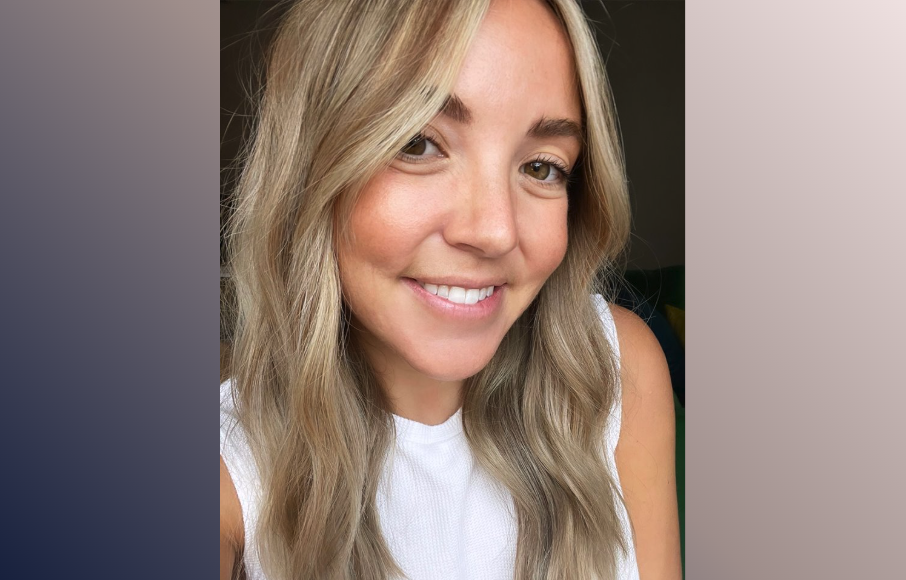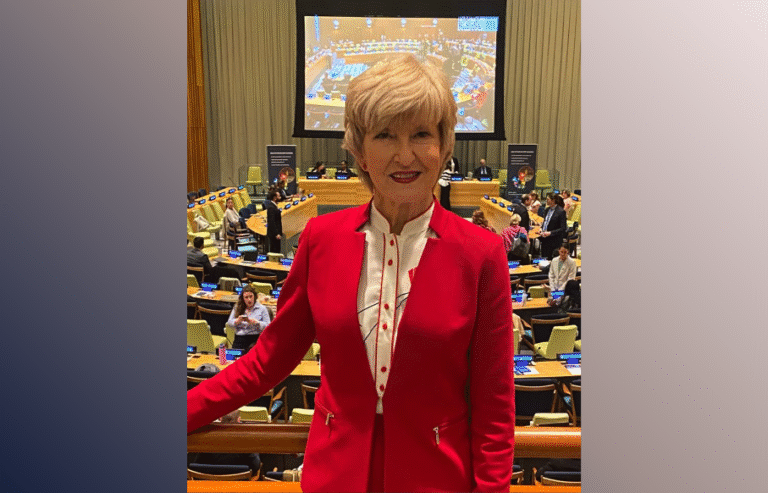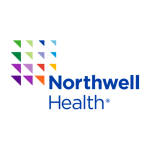After years of being told to “just keep trying,” Monica Wunderman finally found answers that made her feel seen, not blamed. Her body had been speaking for years, but it wasn’t until someone truly listened that the full story began to make sense.
She now shares her journey through her platform @waitingforbabywunder, where she talks about her experience with endometriosis, diminished ovarian reserve (DOR), IVF, and exploring alternative options such as surrogacy. But before she was guiding others, she was in the thick of it—trying to hold on to hope while navigating through uncertainty, chronic pain, and repeated dismissal.
What Monica’s Story Reveals About Endometriosis, Infertility, and the Importance of Whole-Body Care
In our Endo Exchange webinar, “Fertility & Endometriosis: When Egg Quality, DOR & IVF Collide,” Monica joined Dr. Karli Provost Goldstein and Dr. Aimee Eyvazzadeh to discuss the deeply personal—and often overlooked—realities of infertility when endometriosis is part of the picture.
Her experience illuminated what many fertility patients quietly endure:
- Endometriosis and DOR often go undiagnosed and untreated in fertility settings.
- “Poor egg quality” may have a cause—especially when inflammation is involved.
- IVF alone is not always enough. Sometimes, surgical insight and healing must come first.
- Complex anatomy, like Monica’s uterus didelphys, can make diagnosis even more elusive.
Together, their conversation offered not just insight, but a call to action: Dig deeper, listen harder, and stop separating symptoms from outcomes.
When the Body Knows Best—but No One Listens
Monica’s story began at age 12, when her periods were so painful she frequently missed school and vomited. Doctors dismissed it as “bad periods.”
She endured:
- Persistent bloating that made it hard to eat or move comfortably
- Fatigue that felt bone-deep, often hitting without warning
- Pelvic pain that flared around ovulation and menstruation
- Digestive symptoms that seemed to defy every diet she tried
Monica continued to believe her symptoms could be chalked up to painful periods for over a decade—until a routine checkup at age 23 revealed an underlying abnormality: uterus didelphys, a rare condition in which a person is born with two uteri and two cervices. At the time, no one explained what it might mean for her future fertility or how it might predispose her to other conditions like endometriosis.
ESSE Care Insight: Uterine abnormalities, including uterus didelphys, are associated with an increased risk of endometriosis. If you’ve been told you have a uterine abnormality, ask your doctor what complications or related issues it could cause in the future.
When “Just Keep Trying” Isn’t Enough
Monica and her husband began trying again in earnest in 2019. She had been cleared to try naturally by a high-risk obstetrician (OB), but after a year of timed intercourse, no success, and growing physical discomfort, Monica knew something wasn’t right.
“I just kept thinking—why isn’t this working? I was young, I was healthy, but every part of me felt like it was screaming that something was off.”
Eventually, labs revealed diminished ovarian reserve. Combined with her unique anatomy and increasing pelvic pain, the picture grew more complex.
But even then, she was told to just keep trying.
Despite obvious physical signs, Monica was fed the same lines many infertility patients hear, only to be diagnosed with endometriosis later:
- “It’s just age-related.”
- “Low AMH explains this.”
- “There’s no point in surgery—it won’t help egg quality.”
- “Donor eggs may be your best option.”
ESSE Care Insight: When a care plan isn’t producing results—and your symptoms aren’t being taken seriously—it’s time to look at other doctors and other options. At ESSE Care, we help patients stop cycling without clarity and start asking better questions.
Remember; you have the power to say no and seek other care if what a doctor suggests isn’t aligned with your goals.
Multiple IVF Cycles, No Diagnosis, and Mounting Doubt
Monica’s first IVF cycle produced six eggs—none fertilized. “It felt like my body was broken,” she recalled.
A second round, under Dr. Aimee Eyvazzadeh, yielded five blastocysts, three of them normal according to preimplantation genetic screening (PGS). Yet even this success came with growing anxiety.
- Her scans showed a pelvic kidney pressing tighter on her ovary.
- Pelvic pain, fatigue, and bloating persisted—which she’d long attributed to her uterine anomaly.
Dr. Eyvazzadeh recognized the red flags and referred her for a surgical evaluation. Finally!
The Turning Point—Working with a Trusted Endometriosis Specialist
Monica searched for endometriosis specialists, finding one that had a care plan that aligned with her fertility goals. She found ESSE Care, and her consultation with Dr. Karli Provost Goldstein was the first time her story was truly heard.
Here’s what ESSE Care did differently:
- Monica’s CA-125—an inflammation marker no one else had ordered— was checked before the visit.
- Imaging was reviewed for signs of endometriosis, not just cysts or fibroids.
- Her symptoms were centered in the conversation, not brushed aside.
Monica finally felt like her pain, her bloating, and her fatigue weren’t “normal.” They were signs of something real.
What Surgery Revealed
In 2023, Monica underwent robotic laparoscopic excision surgery performed by Dr. Goldstein after more than 20 years of unexplained pain. Dr Goldstein used a dual-compartment surgical approach—simultaneously viewing internal cavities and external anatomy.
Here’s what was discovered in surgery:
- Stage 2–3 endometriosis on the bowels, bladder, uterus, and surrounding organs
- Chronic inflammation and adhesions, impairing function
- A twisted pelvic kidney, removed in the same surgery
Dr. Goldstein explained how this level of disease almost certainly explained Monica’s poor IVF outcomes. The inflammation, not just the DOR, was likely affecting egg quality and uterine receptivity.
ESSE Care Insight: Addressing the root cause of your symptoms through excision surgery can reduce inflammation, preserve organ function, and help you achieve your health and fertility goals. Your treatment plan should be about more than just getting pregnant; it should put you on a path to healing.
How Monica’s Care Plan Was Built Around Her Goals
Rather than defaulting to cycle suppression or organ removal, Monica’s care was tailored to her future family-building plans:
- Her ovaries and uterus were preserved.
- Excision, not ablation, was used to fully remove disease.
- She was not rushed back into IVF—instead, she was supported through recovery.
Her plan was no longer panic-driven; it was purpose-driven. Given the right information, Monica was able to choose surgery from a place of strength rather than fear.
After Surgery: Space to Heal, Pause, and Pivot
Following excision surgery, Monica’s body began to calm.
For the first time in years, she experienced:
- Less bloating
- Fewer flare-ups
- More energy
- Emotional clarity about her next steps
With pathology confirmed and her anatomy fully understood, Monica and her providers agreed: Exploring alternative options such as surrogacy was the safest and most empowering path forward.
Risks from her anatomy, pelvic kidney, endometriosis, and surgical history meant that carrying a pregnancy could be dangerous.
“Surrogacy wasn’t our plan. But realizing I wanted to be a parent more than I needed to be pregnant changed everything.”
ESSE Care Insight:
Carrying a pregnancy with endometriosis can come with increased risks, including abnormal placentation, bleeding, gestational diabetes, and miscarriage. We recommend working with a high-risk OB and, when appropriate, pursuing expert excision surgery before pregnancy to reduce inflammation and improve outcomes. If you’ve experienced infertility or loss without clear answers, endometriosis should be part of the conversation.
What Monica Wants You to Know
Here’s what Monica wants every patient to hear:
- You are not broken. If treatment isn’t working, don’t assume it’s your fault.
- Pain, fatigue, bloating, and brain fog are all relevant to your diagnosis.
- You’re allowed to say no to protocols that don’t feel right.
- You deserve a diagnosis—not just a next step.
- There’s strength in resting. There’s power in pausing.
Why Her Story Matters
“I wasn’t failing. I was inflamed, undiagnosed, and trying to survive.”
Monica’s story shows what happens when a provider finally listens. Her symptoms weren’t irrelevant—they were ignored. Her courage in sharing her experience is helping others demand better from their doctors and get better care.
At ESSE Care, we believe every patient deserves full answers and real partnership. Monica is not just a patient—we’re proud to call her an advocate, ally, and changemaker in how we talk about infertility and endometriosis.
If her story resonates with you, you’re not alone. We’re here to listen. And we’ll believe in you from the very first visit. The body has an innate desire to heal and restore; we are here to facilitate that journey.












